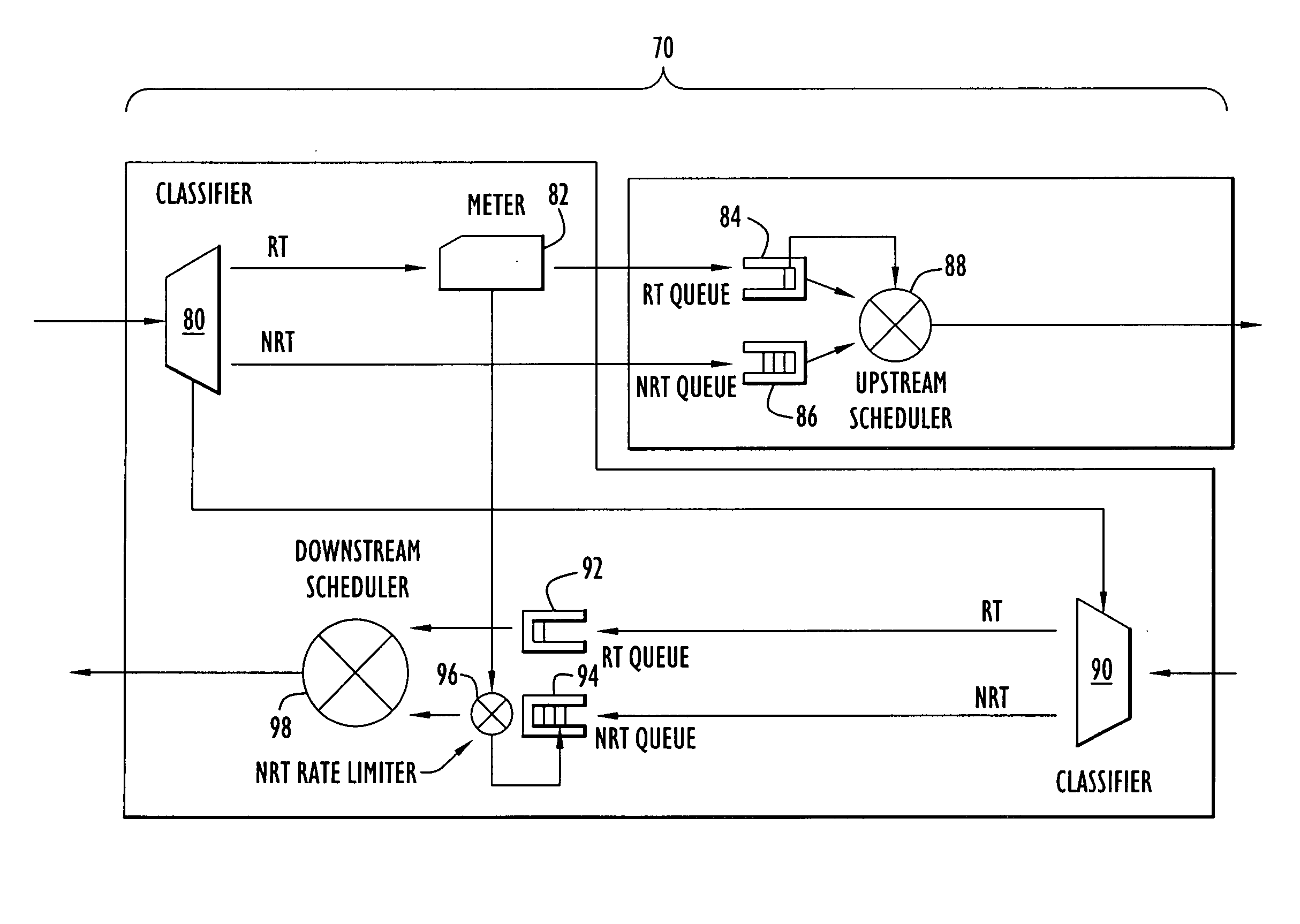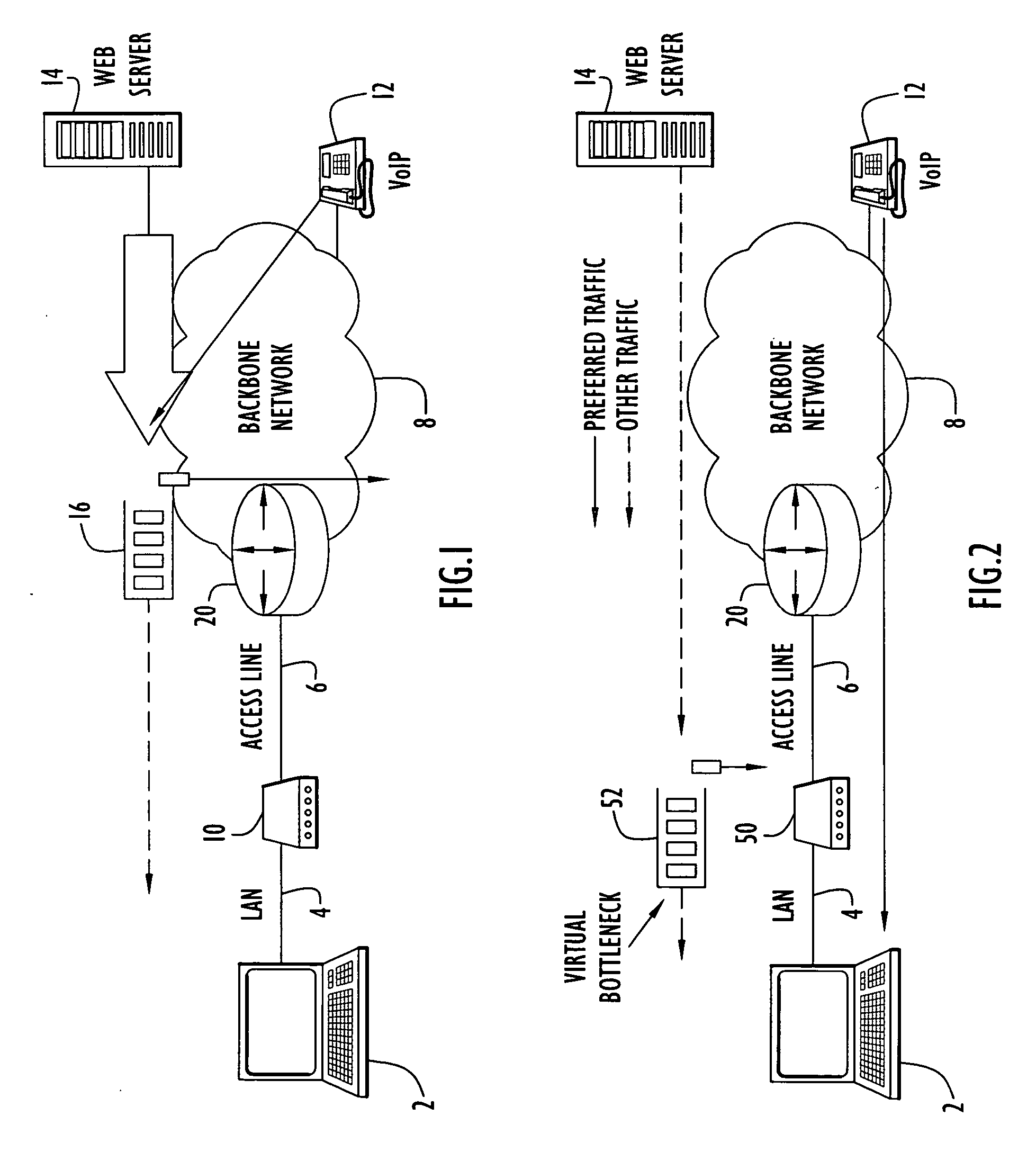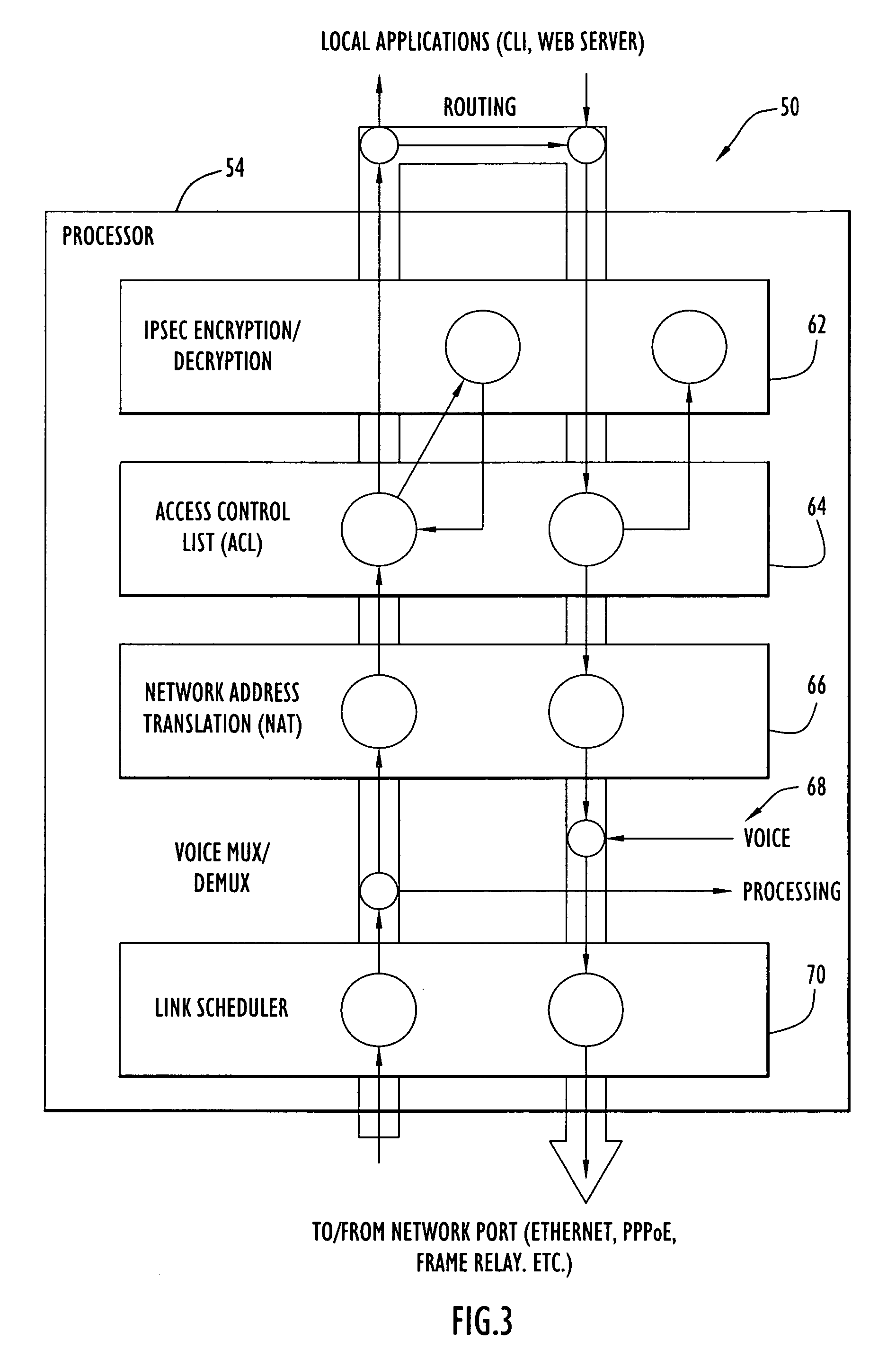Communication device and method of prioritizing transference of time-critical data
a communication device and time-critical data technology, applied in the field of network communications, can solve the problems of user merely experiencing slower response time, time-critical data packets have the same probability of being discarded as time-sensitive data packets, and degradation of received data streams, so as to enhance the transfer of time-critical data
- Summary
- Abstract
- Description
- Claims
- Application Information
AI Technical Summary
Benefits of technology
Problems solved by technology
Method used
Image
Examples
Embodiment Construction
[0026] The present invention pertains to an access router (e.g., a router that transfers data between an end-user system or local network and an access line for a backbone network) that reduces the delay and packet loss of real-time down-steam traffic (e.g., time-critical packets transferred over the access line from the backbone network toward the end-user system). An exemplary communications configuration or topology employing an access router according to the present invention is illustrated in FIG. 2. Specifically, the configuration is substantially similar to the configuration described above and includes end-user computer system 2, Local Area Network (LAN) 4, access line 6, backbone network or Internet 8, voice terminal 12, server system 14 and edge router 20, each as described above. The configuration further includes an access router 50 that enhances transfer of time-critical data packets in accordance with the present invention as described below. End-user system 2 is prefe...
PUM
 Login to View More
Login to View More Abstract
Description
Claims
Application Information
 Login to View More
Login to View More - R&D
- Intellectual Property
- Life Sciences
- Materials
- Tech Scout
- Unparalleled Data Quality
- Higher Quality Content
- 60% Fewer Hallucinations
Browse by: Latest US Patents, China's latest patents, Technical Efficacy Thesaurus, Application Domain, Technology Topic, Popular Technical Reports.
© 2025 PatSnap. All rights reserved.Legal|Privacy policy|Modern Slavery Act Transparency Statement|Sitemap|About US| Contact US: help@patsnap.com



